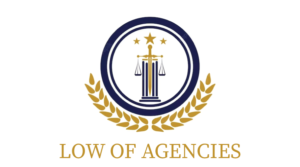Terms like bankruptcy and insolvency imply financial pain and uncertainty. These terms refer to the difficulties that firms and people encounter when their financial responsibilities outweigh their available resources in the world of banking and trade. Anyone attempting to make their way through the complicated world of contemporary economics must have a solid grasp of the nuances of bankruptcy and insolvency.
Businesses and individuals are continually exposed to financial dangers in today’s fast-paced economic world, which can result in bankruptcy and insolvency. The legal declaration that an entity, whether an individual or a business, is unable to pay its debts to creditors is referred to as bankruptcy. Contrarily, insolvency is a broader phrase that includes the inability to pay debts and occasionally results in bankruptcy. Let’s explore these ideas in more detail.
Bankruptcy Types
There are many different types of bankruptcy, and each has its own processes and effects. While Chapter 7 bankruptcy entails the sale of assets to pay creditors, Chapter 11 bankruptcy permits corporations to reorganize and carry on with business as usual while creating a plan to repay debts. Chapter 13 allows for the development of a repayment plan to pay off debts over time, particularly for individuals. Debtors have options to select the best option for their unique situation because to these characteristics.
The Function of Bankruptcy
Despite being closely tied to bankruptcy, insolvency doesn’t usually result in legal action. The imbalance between liabilities and available assets is represented by it. By negotiating with creditors and implementing cost-cutting measures, businesses frequently go through financial restructuring to avoid bankruptcy. Before turning to bankruptcy as a final choice, people can also seek credit counseling and debt consolidation to handle their financial difficulties.
effects on reputation and credit
Insolvency and bankruptcy have long-term repercussions. Due to their damaged credit histories, both individuals and organizations will probably encounter difficulties receiving credit in the future. Additionally, the procedure becomes public knowledge, which has an impact on the parties involved’s reputations. However, taking proactive measures for financial recovery can eventually help to lessen these adverse impacts.
Protective measures and legal processes
When bankruptcy is unavoidable, the legal system offers a formal framework for handling debt. A court-appointed trustee who is in charge of the liquidation or reorganization process is involved in bankruptcy proceedings. Automatic stays are put in place after filing for bankruptcy, stopping creditors’ collection activities. This short-term relief gives debtors some breathing room to reorganize and plan.
Options Rather Than Bankruptcy
Before making a choice, people and businesses should consider all available options since bankruptcy is not the only option. Temporary relief can be obtained by negotiating with creditors to cut interest rates, lengthen the terms of payment, or agree to a lower sum. Consultations with credit counseling organizations or financial experts might provide information on practical choices.
The Cost in Emotion
In addition to having negative financial effects, bankruptcy and insolvency may be emotionally draining for both people and business owners. Anxiety, despair, and strained relationships can all be brought on by the strain of growing debts and uncertain finances. To get through these obstacles, it’s important to get emotional support and keep your mind on the future.
Understanding the Experience
Insolvency and bankruptcy can be seen as educational opportunities. They emphasize the significance of risk management, strategic planning, and financial literacy. Businesses can pinpoint the operational shortcomings that contributed to their financial difficulties and take action to address them. To avoid future disasters, people might improve their financial habits and budgeting abilities.
Conclusion
Even if they are difficult, bankruptcy and insolvency are not insurmountable obstacles. Individuals and companies can navigate these waters more successfully if they have a comprehensive awareness of the legal procedures, available options, and the emotional factors involved. The objective should always be to come out stronger, wiser, and more prepared to tackle the complexities of the financial world, whether through debt restructuring, negotiation, or legal actions.

